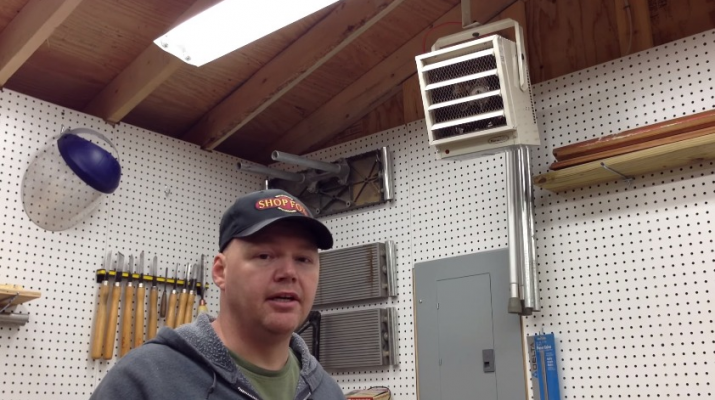Zone Heating Guide: Three Ways to Save on Utility Bills
Do you know how much you spend annually on heating and cooling expenses? According to the US Department of Energy, the average energy expenses for a home in the US is about $2200 a year, and over half of that goes towards heating and cooling. With a little planning, you can reduce that expenditure significantly by instituting a zone heating plan in your home.
The principle of zone heating is simple; only heat the rooms you're going to use. If you think about it, you already have zone systems installed in your home like your lighting and plumbing systems. You don't have to turn on every light in the house when you go into the kitchen. Nor do you turn on every tap when you start the water running for a shower. Why should heating and cooling function any differently?
What is Zone Heating?
A zone heating system lets you control the temperature of your home from spot to spot instead of relying on a single thermostat in the center of your home. You can adjust each zone as needed to compensate for sun exposure, high ceilings, occupancy, or any activity that affects room temperature, without overheating or freezing people in the other parts of the house. You'll also notice a quicker rise in temperature, as only one part of the house has to warm up instead of the whole place.
There are three different ways of instituting a zone heating plan in your home, but they all have the same two goals:
- Save money on utility bills
- Make yourself more comfortable in your home
In this article, we'll introduce each zone heating method, from the simplest to the most complicated, and discuss the advantages and disadvantages of each. In the end, we'll offer some tips for saving money on your heating costs, regardless of your zone heating system.
Do It Yourself - Space Heater Zoning
The easiest zone heating plan to begin is by using electric space heaters. (You should never use gas-fueled space heaters inside unless they are properly vented.) This method focuses on warming yourself, not your whole house.
- Turn the thermostat down on your central heating system. For each degree you reduce on the thermostat, you will save 3% on your heating bill. If you set the thermostat to 67°F or below, you will start to see significant results.
- Put electric space heaters in the rooms you use the most, or use a portable heating unit you can carry with you. There are many types of space heaters available, so you can choose one or more that match your individual requirements. Baseboard heaters and wall and panel heaters are all great options for zone heating.
- If you have a forced air heating system in your home, do not close the doors and heat registers in unused rooms. This can cause damage to the ducts and furnace, which is calibrated to provide heat through the whole house. Instead, your furnace will just be required to maintain a very low level of heat throughout the house. It's almost like pretending you don't have a whole-house system at all.
- Make sure you turn off space heaters when you leave the room. This is for safety purposes as well as cost efficiency.
Electric heaters cost more to operate per BTU than furnaces fueled by gas or oil; however you will not be heating the whole house, just one room or area at a time so your overall expenditures will be lower. Plus, electric heaters are nearly 100% efficient, which means that all the electricity that goes in is converted into heat that is expelled directly into the room you're trying to heat, with no heat lost in the ducts along the way.
Convenient Compromise - Mini-Split System Zoning
Mini-split zone heating and cooling, which is alternatively called multi-split or ductless heating and cooling, are an efficient alternative to whole-house systems. They are easier to install than a duct-and-furnace system, more flexible in their configuration, and far less costly to set up and operate.
The basic technology is a heat pump, with a condenser unit that sits outside your house, just like an air conditioner. In fact, a heat pump really is just an air conditioner, but designed to pump both hot and cold air inside. It is a major advantage of this type of system, in that you get both heating and cooling without having too major appliances.
The second major advantage is that it does not require the installation of ductwork through your home. Instead, a conduit connects the condenser to one or more wall-mounted air handling units installed inside. The conduit contains a power cable, refrigerant tubing, suction tubing, and a conduit drain and requires only a small hole drilled in the wall to allow access.
A typical split system allows you place one to four air handlers in your home, each providing heating and cooling to a separate zone. Each handler has a thermostat and fan control that lets you adjust the temperature independently. The limits of the system are apparent if the zones in your home contain more than one room; an air handler in the master bedroom will have difficulty maintaining the same temperature in a bedroom across the hall, especially if doors are closed.
A split system runs on electricity, though overall electric heat pumps are much less expensive to operate than electricity-fueled furnaces. The other major drawback is that heat pumps are less efficient as the outside temperature drops, and are generally not suitable for cold climates. A mini-split system requires professional installation, and annual maintenance to ensure optimal output.
The Whole Shebang - Whole House Zoning
Whole house zone heating systems are becoming more and more popular in new home construction, and for people upgrading their home's HVAC system during remodeling. But they can be very expensive and require professional installation. However, these systems are best equipped to maintaining a comfortable level of even heat throughout an entire building.
Upstairs rooms can be six to ten degrees warmer than a ground level room. If you are keeping the downstairs at a comfortable temperature during the day, then your upstairs level, with all those empty bedrooms, is probably overheated. Similarly, rooms that are always too warm because they have southern exposure, or too cold because they have vaulted ceilings can benefit from zone heating installations.
The number of zones needed depends on the configuration of your house and your daily use. You'll need to identify the separate zoning needs of your house. Each zone has its own thermostat, and is served by its own system of ductwork, with dampers and bypass ducts to help direct air to whichever zone is being utilized.
There are two kinds of whole-house zone heating systems:
- A single unit that is designed to maintain two separate zones simultaneously
- A system with multiple units that each operate independently
The kind of system you choose will depend upon your budged and building needs. Work with a reputable contractor to assess your usage and design a system that will best serve your own home.
Stay Warm for Less
Here are a few tips for saving money on heating, no matter what type of heating system you employ.
- Make sure your house is properly air sealed. Weather strip doors and windows, fill cracks and gaps in the walls and ceiling, and make sure vents and outlets are properly insulated. Close the damper on your fireplace when it's not in use.
- Check to make sure you have adequate insulation in your attic and walls.
- Use a ceiling fan, with the rotation reversed to blow air towards the ceiling. This will help distribute the hot air that drifts upwards to the rest of the room.
- Dress warmly. If you keep the thermostat low, you can still feel comfortable by wearing a sweater or sweatshirt, and keeping socks or slippers on your feet.




0 comments